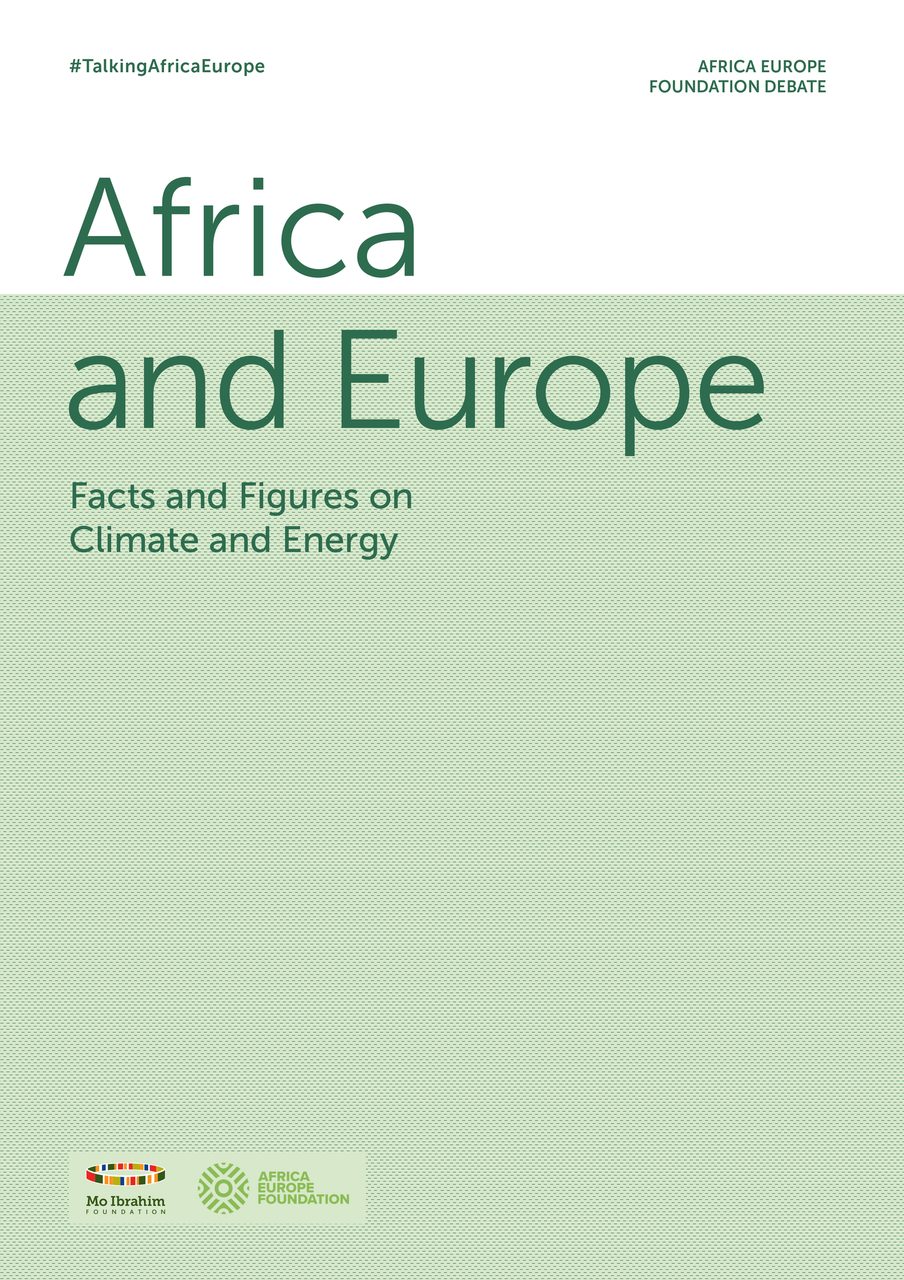Download the report
Ahead of the European Union-African Union summit, 17-18 February 2022, the Africa-Europe Foundation organised a series of debates on three key topics of shared interest.
Each debate was accompanied by a background note provided by the Mo Ibrahim Foundation, providing key facts and figures.
At COP26, 39 countries and development agencies, including 12 EU countries, pledged to stop funding overseas fossil fuel projects - including natural gas, by far the cleanest fossil fuel.
Such a one-size-fits-all approach fails to consider the situation for Africa, where 600 million people still lack access to energy.
54.7%
of Africans have access to energy

100%
of EU citizens have access
to energy

Uzodinma Iweala
You cannot ask the continent of Africa to carbon finance the lifestyles of wealthier nations.

Despite having triple the population, Africa's energy consumption is less than one third that of the EU.
Furthermore, Africa’s carbon emissions are relatively low, especially considering its population size.
With 17% of the global population, Africa’s share of global carbon emissions is a mere 4%. In comparison, the EU is responsible for more than double this level of carbon emissions (8.2%), despite having just 5.8% of the global population.
Disparity in consumption
and emissions
of population
5.8%
of population
17.0%
of energy
consumption
3.4%
of emissions
4.0%
of energy
consumption
10.7%
of emissions
8.2%






Africa (all countries)
European Union (all countries)
No other continent in history has been tasked with the challenge of developing without polluting, whilst being simultaneously the major victim and lowest contributor to emissions.
Olusegun Obasanjo
In the journey to renewable energy sources, Africa needs natural gas as a transition fuel.
Abundant on the continent, where natural gas reserves are 33 times larger than those in the EU, gas is also the cleanest burning fossil fuel. Over the last decade, it has provided almost one third of the global growth in demand for energy.
If all funding for overseas gas projects is cut, it could be counterproductive, pushing many Africans towards cheaper, but higher polluting fuels.
Damilola Ogunbiyi
Transitioning
to a greener future

We have to supply adequate clean cooking, we have to supply gas to integrate as a baseload for renewable. Renewables don’t just happen magically.
In 2016, only 26.6% of Africans had access to clean cooking fuels compared to 98.8% in the EU.






Wind and solar are the fastest growing energy sources in both Africa and the EU and will play a key role in the energy future of both continents. However, they cannot meet Africa’s energy needs alone.
Exclusively funding renewables could leave many in Africa with unreliable and expensive power, hindering the continent's energy development.
We need to come up with a joint strategy that is climate friendly, but also takes into account the level of development of African countries.
Macky Sall



